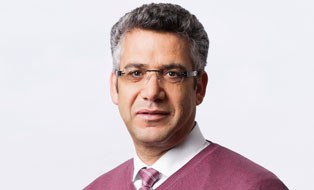Subproject 1: Modeling and development of textile adaptive structures for complex deformable adaptive rubber composites
Motivation
To achieve complex deformation patterns in fiber composite components with gradual degrees of freedom, it is beneficial to integrate actuator functionalities directly into the textile reinforcement structure. Hence, reproducibly high forces can be transmitted and large deformation ranges can be realized. Force transmission is guaranteed through the mechanical anchoring (incorporation) of the functional component into the textile structure, which in turn interacts with the matrix by means of a highly specific interface design (form fit/material bond). Furthermore, transmission is ensured by a form-fit connection and proper material bonding between functional component (e.g. shape memory alloy (SMA)) and rubber matrix.
State of the art and preliminary research
Previously, pretests were performed for the integration of shape memory materials into pourable silicon matrix without textile reinforcing structures; these tests were however limited to simple topologies. Hence, profound knowledge gained from our own preliminary research in the fields of textile reinforcements for thermoset components, rubber components, innovative functional yarn development, and function integration will be employed for the development of textile adaptive structures.
Scientific questions and project objectives
TP1 aims at the development of functionally adapted, textile, processable actuators based on SMA for the implementation of high forces (in the kN range) and degrees of deformation (> 90°). Moreover, functionalized filamentary actuators, such as a braided cylindrical capacitor or bicomponent filament yarn, will be developed by means of electroactive polymers (EAP), allowing for high switch and transformation frequencies (10 Hz minimum). It is aimed at achieving specific deformation patterns with high degrees of freedom in terms of the resulting deformation. Thus, modelling is performed by interlacing for the targeted integration and arrangement of actuator components in multi-layered reinforcement structures with grading properties. These objectives involve the advancement of already available algorithms for the mechanical modeling and simulation of various degrees of deformation of functionalized textile reinforcing structures with local properties on the meso-scale. The actuator effect dependent on operating principles will be taken into consideration.
Contact
Institute of Textile Machinery and High Performance Material Technology (ITM), Faculty of Mechanical Science and Engineering at TU Dresden
 © Christian Hüller
© Christian Hüller
Mr Univ.-Prof. Dr.-Ing. habil. Dipl.-Wirt. Ing. Chokri Cherif
Head of the Institute and the Chair of Textile Technology
Send encrypted email via the SecureMail portal (for TUD external users only).

